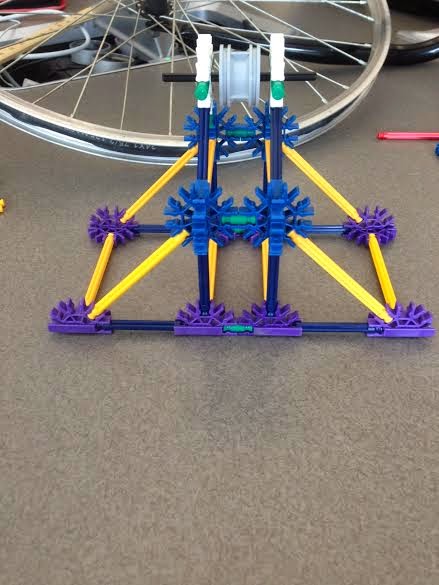On April 30th, I (Jacque) met with Marco (one of our advisors) to go over calculations and possibilities for generating the voltage with the available rpm the water wheel gives us without any external pumping. We have about 6 rpm to work with and a radius of 0.5 meters. We also figured in order to power one yellow or red LED we'll need at least 3 volts (the least amount required for the available colors).
One generator that we found requires 900 rpm to generate 3 volts. This can be seen here on ebay.
Using the relationship:
ωA represents the angular velocity (rpms) for the water wheel and rA represents its radius. ωB is the angular velocity we'd get with water rB we decide to use. At first this was upsetting, figuring that for 900 rpm we'd need a final radius of 3 mm. Wowza! That seemed not very feasible, especially for the durability we're looking for, so we had to consider our options. An amplifier? That would require external power, not ideal, but it could work. Maybe use a bike dynamo? That may require too much torque/inertia, which we do not have much of. We met before class to discuss, but didn't come to any serious conclusions.
During class, however, Dr. Scoles had the idea to do more than 1 wheel ratio. Brilliant! This means that we'd hook up the larger pulley that is attached to the water wheel to a smaller radius with a belt, and attach a larger radius to that smaller radius, so from there we could have another belt to an even smaller radius, getting an actual decent amount of rpm! Here's a sketch of what I'm trying to say:
And with the ratios in this spread sheet, we can reach at least 900 rpm:
These ratios seem a little crazy, but we think it is definitely doable. It'll have to be! This coming week we're going to search for DC generators like the one on ebay (only issue with that one is it takes 2-3 weeks shipping! But if we have to order it from there, we will). We also have to consider materials to make the pulleys and what belts to buy.
Other in class accomplishments:
Jess & Courtney:
They had to calculate the mass of the existing water wheel to continue the "Background" section of the blog. We obviously needed to estimate every measurement, and most of these estimates had to come from looking closely at the photos we took from the Please Touch Museum.
Courtney & Megan:
They learned how the external power source operated along with a small example moter complete with working gears encased in clear plastic. The max voltage for that particular motor was 3 volts, but had been known to make it safely to 5 volts for no more than 10 seconds. Hopefully we can use this generator/motor or a similar one for our project.
Sarah:
She worked on the final project.


































